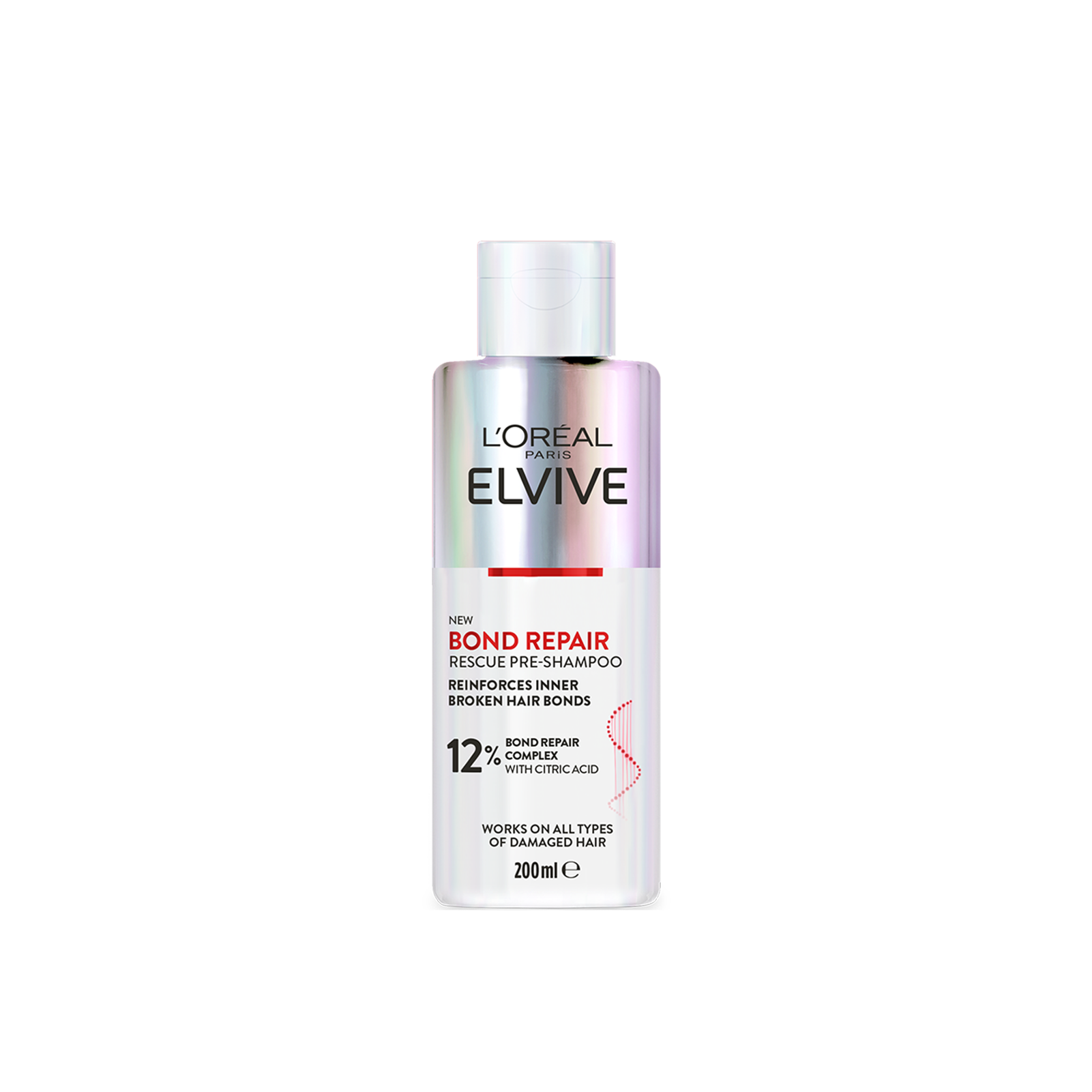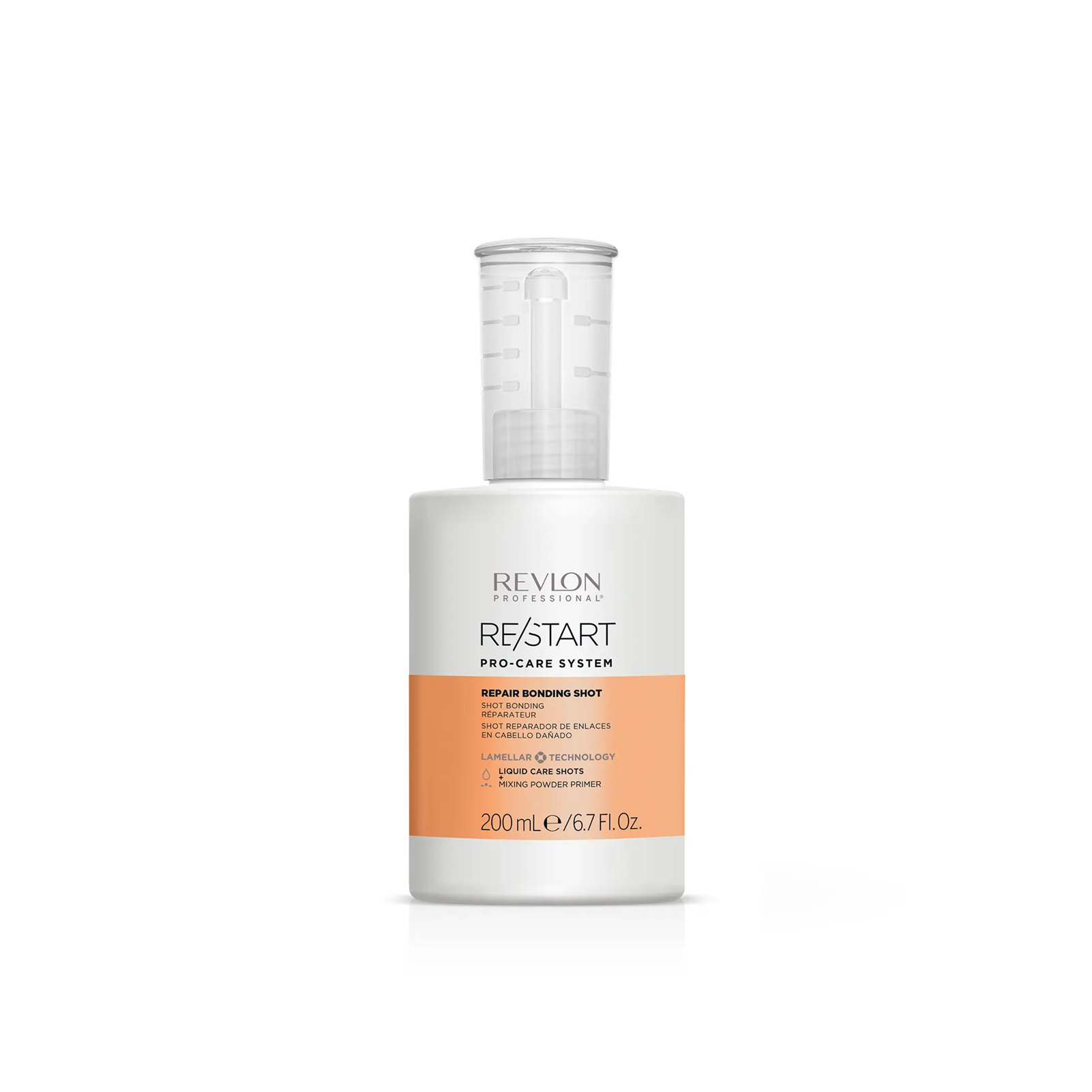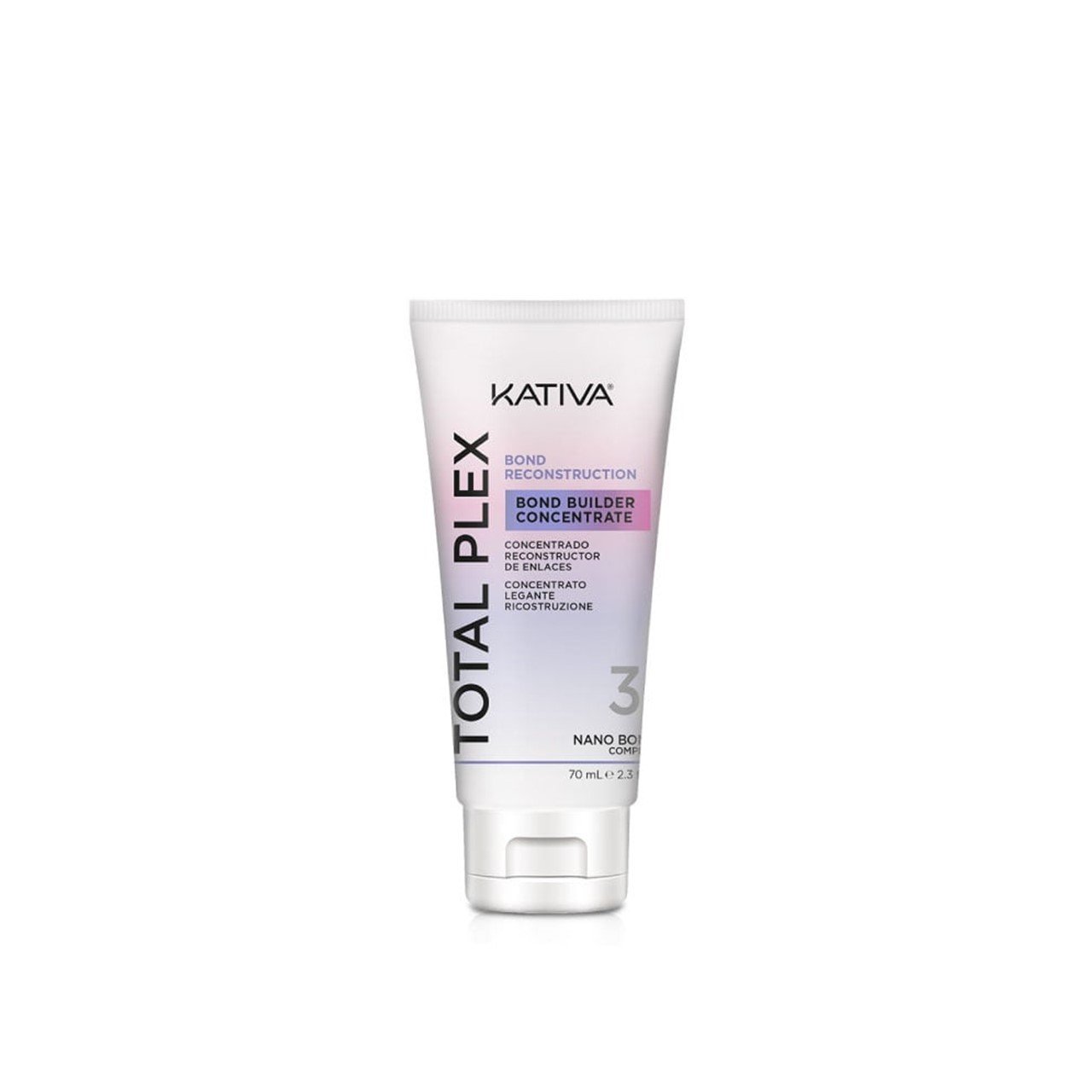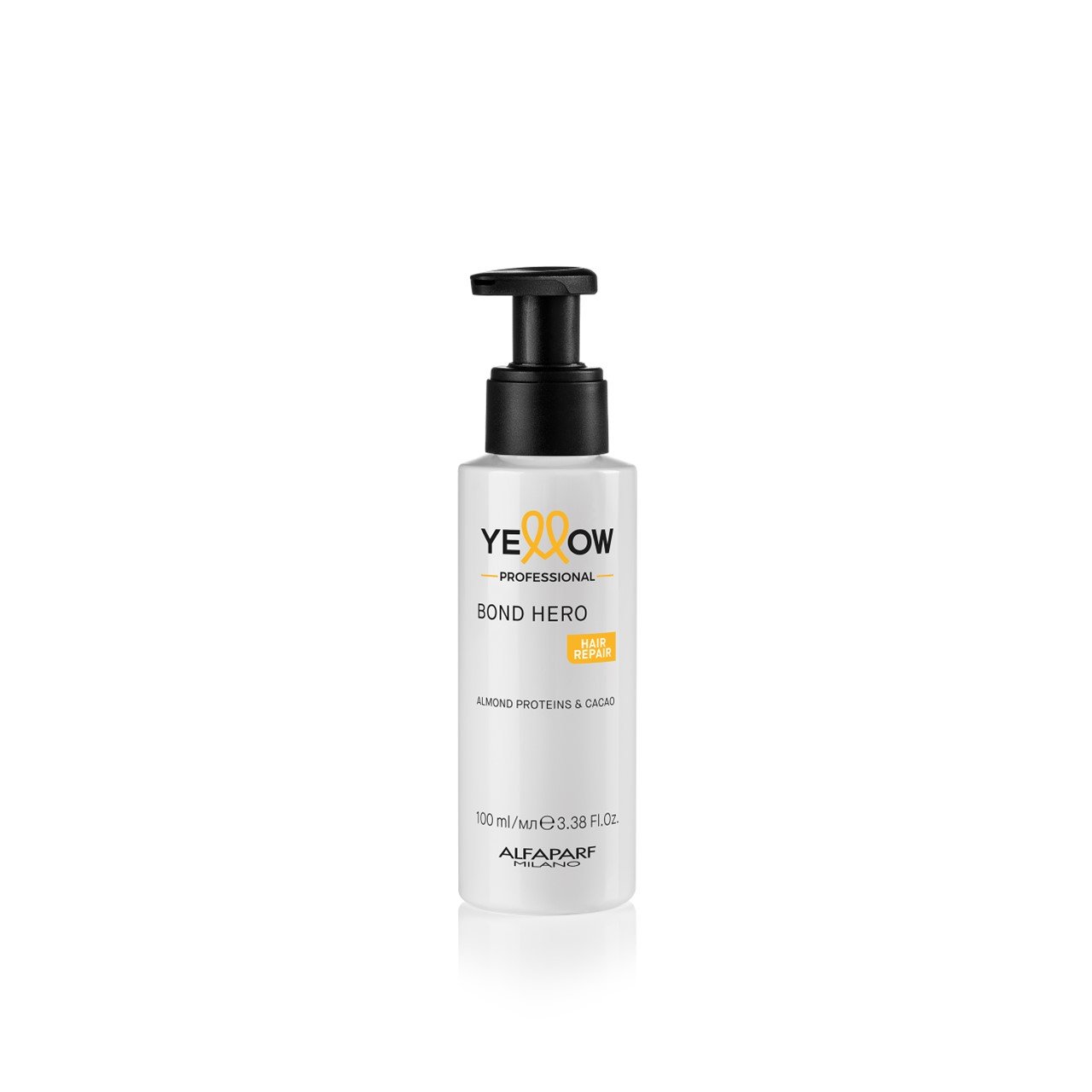
Hair bond repair treatments seem to be all the rage right now. From superstar OLAPLEX to newer releases like Redken Acidic Bonding Concentrate, there’s a lot of talk of “hair bonding” and “bond building”–but what does any of that mean? What exactly are we “bonding” when we use these products, and what sort of benefits is that going to bring to our hair?
Today we’re going in deep and exploring the ins and outs of hair bond repair treatments, starting from the basic question: what exactly is a hair bond?
On this post:
- What are hair bonds?
- How do you know if you have broken hair bonds?
- Can you repair broken hair bonds?
- How do bond repair treatments work?
- Should you use a bond repair treatment?
- How to add a bond builder to your hair care routine
What are hair bonds?
Let’s start from the beginning. What exactly is a “hair bond”? In order to explain this, we’ll have to look into the structure of the hair. Each hair is composed of three sections: the cuticle, which forms a sort of “shield” on the outside of the hair fiber, the cortex, which is right underneath, and the medulla, which forms the inner core of the hair. Holding these sections together are various types of “bonds” which, when healthy, help maintain the structural integrity of the hair, all the while defining its shape.
There are three types of bonds: disulfide bonds, salt bonds, and hydrogen bonds. The latter two can be easily broken when in contact with water, heat, or, in the case of salt bonds, sudden changes in pH. However, that’s not always a bad thing. If you couldn’t break your hydrogen bonds, for example, you wouldn’t be able to take your hair from curly to straight with styling tools. Conversely, you wouldn’t be able to wash away your styling, either! As you can see, it’s not all bad.
Let’s focus on disulfide bonds, though, which is where a lot of hair care innovation is at right now.
Disulfide bonds are permanent, in the sense that they define our hair type and hair shape, and remain the same throughout our life. They can be broken through chemical processes–think chemical relaxing or straightening, which changes the shape of your hair–but they’re generally pretty hardy. However, they’re still vulnerable to everyday damage. Chemical treatments, especially those involving bleaching, have the greatest potential to damage disulfide bonds, but heat styling and aggressive brushing, tugging, or pulling can also cause damage.
How do you know if you have broken hair bonds?
Short of looking at your hair under a microscope, you can’t really know for sure whether you have broken hair bonds. However, you can hazard a pretty effective guess.
Healthy bonds create the look of healthy hair: think shiny, strong locks that look and feel great. Broken or damaged bonds, on the other hand, tend to create the opposite effect. The hair may look dull and dry, or it may feel coarse and rough to the touch. You may experience split ends, breakage, or lengths that can’t seem to grow past a certain spot.
(If you’re struggling with frizz… your particular problem may be with hydrogen bonds, as Dr. Michelle Wong of LabMuffin explains.)
Can you repair broken hair bonds?
Recent haircare innovation seems to suggest that yes, you can repair broken hair bonds. It is not by chance that we are seeing more and more products on the market that identify themselves as “bond builders” or “bond repair treatments”. As research and development move forward, more and more brands are discovering new ways to prevent and repair damage to hair bonds. On the one hand, these products have an obvious advantage, that of repairing damage and restoring a healthy look to the hair. On the other hand, they bring a second advantage that will be highly valued by those who like to be adventurous with their hair: with bond builders, you can make your hair withstand more chemical treatments, which is ideal for those who like to change their color frequently, or use heat styling to create bold new looks.
How do bond repair treatments work?

Now, that is the million-dollar question. Different brands will use different approaches to bond building, so no two products will be exactly the same, or provide the exact same benefits through the exact same mechanism. The one thing they tend to have in common is their market positioning: generally, you will see bond builders marketed for dry, damaged hair that has sustained quite a bit of chemical damage (with or without coloring). As for claims, you will often come across terms like “hydrating”, “conditioning”, “repairing”, or “strengthening”.
Example #1: OLAPLEX
Let’s look at one of the top-sellers in the bond repair treatment category, OLAPLEX. OLAPLEX launched in the professional hair care market in 2014, and it gave professional hairdressers the chance to go big with chemical treatments without having to subject the hair to unrepairable damage that it could not possibly recover from. When applied to the hair, OLAPLEX targets broken disulfide bonds through the action of a patented star ingredient, Bis-Aminopropyl Diglycol Dimaleate. In short, OLAPLEX locates and mends broken disulfide bonds before further damage can occur.
OLAPLEX came into the world as a salon treatment, but you don’t have to go into the salon to benefit from it. If you’d like to try the OLAPLEX magic at home, you can go straight to OLAPLEX Hair Perfector Nº3. It will work, the brand says, “because the entire OLAPLEX line shares the same active ingredient to repair broken bonds in the hair. N°3 Hair Perfector is formulated for at-home care and maintenance. When used alone without the in-salon treatment, OLAPLEX N°3 acts as a mini treatment.”
Example #2: Redken Acidic Bonding Concentrate
Other brands, like Redken, will take a different approach to bond repair. Redken Acidic Bonding Concentrate, for instance, features an exclusive Bonding Care Complex that contains citric acid, an alpha hydroxy acid. According to the brand, this complex “strengthens weakened bonds and provides ultimate strength repair, intense conditioning, and color fade protection for those with color-treated hair.”
The formulas are also pH-balanced and pH-balancing, meaning they will help you keep your hair in the sweet spot of the pH scale–just a little on the side of acidic. We’ve seen before that some of the bonds in your hair are vulnerable to sudden changes in pH, and the Redken Acidic Bonding Concentrate hair care system helps you keep that particular variable under control.
Should you use a bond repair treatment?
Although bond repair treatments first appeared in the world of professional care, especially aimed at those who had undergone dramatic color changes or other chemical treatments, the current reality is a little bit different. Today, bond builders are available for at-home use, and anyone can incorporate them into their hair care routine, regardless of their hair type.
To put it simply: if you feel like your hair could use a serious dose of TLC, you’re a good “candidate” for a hair bond repair treatment. This holds especially true if you have color-treated hair, if you have undergone any sort of salon chemical treatment, or if you are a regular user of heat styling tools. Unlike keratin treatments, which can be overused and leave your hair feeling a little stiff, there’s no harm in using bond repair treatments on the regular. Whether you opt for OLAPLEX, Redken, or any other brand, you will find that many products are actually recommended for daily use, and won’t bring any harm to your hair.
How to add a bond builder to your hair care routine
Alright, so you know all about hair bonds and you’re pretty confident that you know how hair bonding treatments work. What you may be wondering is, how do you actually add one of these products to your hair care routine? The answer, as always, depends on the product.
If you’re looking to start using OLAPLEX, for example, the star of the show is undoubtedly OLAPLEX Hair Perfector Nº3. This is a pre-shampoo treatment that can be used on its own, and then followed with a shampoo and conditioner of your choice. However, if you’d rather keep the entire routine on-brand and maximize the repairing effects of OLAPLEX, you can follow the heavyweight Nº3 with the Bond Maintenance Shampoo Nº4 and the Bond Maintenance Conditioner Nº5.
This general rule of thumb should serve you well with most hair care dilemmas: if you can only buy one item, choose the actual treatment product–in this case, Nº3–instead of its complements. Even the best hair bonding shampoo will only stay on your hair for a couple of minutes, so don’t spend your hard-earned money there if you can buy a treatment product instead.
If you’d like to try the Redken Acidic Bonding Concentrate instead, the brand recommends that you combine two or more products from the range. The Redken Acidic Bonding Concentrate Shampoo and Conditioner together should bring you significant results; if you’d like to boost those, then tack on the Acidic Perfecting Concentrate Leave-in Treatment at the end of the routine for the ultimate effect.
Now that we’ve explored a little bit of the world of hair bonding treatments, we hope you’re feeling a little bit more comfortable with the idea of adding these products to your hair care routine. If you’re dealing with signs of damage, such as dullness, split ends, or breakage, a bond builder may be a really good option for you.
Beauty Writer & Editor


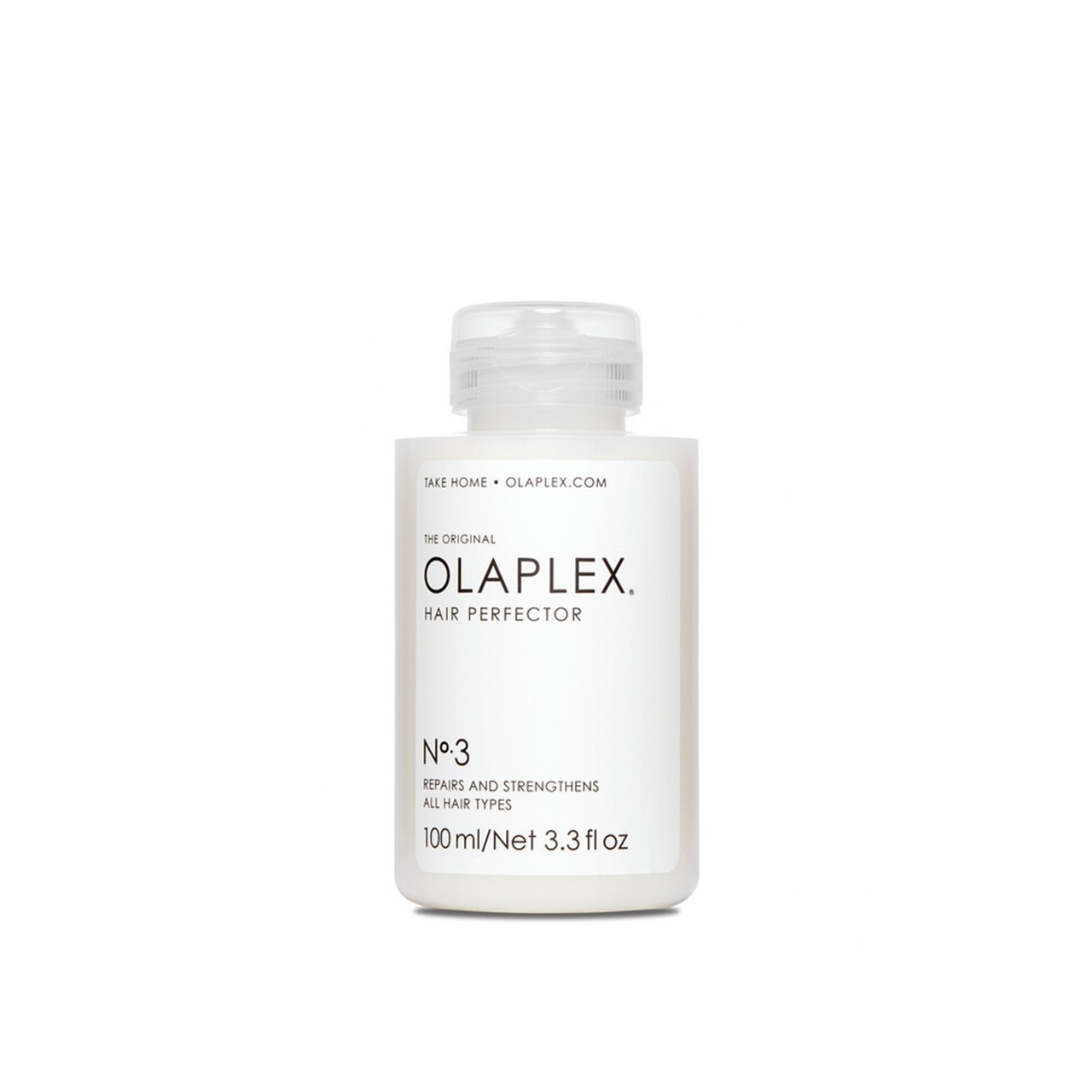 OLAPLEX Hair Perfector Nº3
OLAPLEX Hair Perfector Nº3
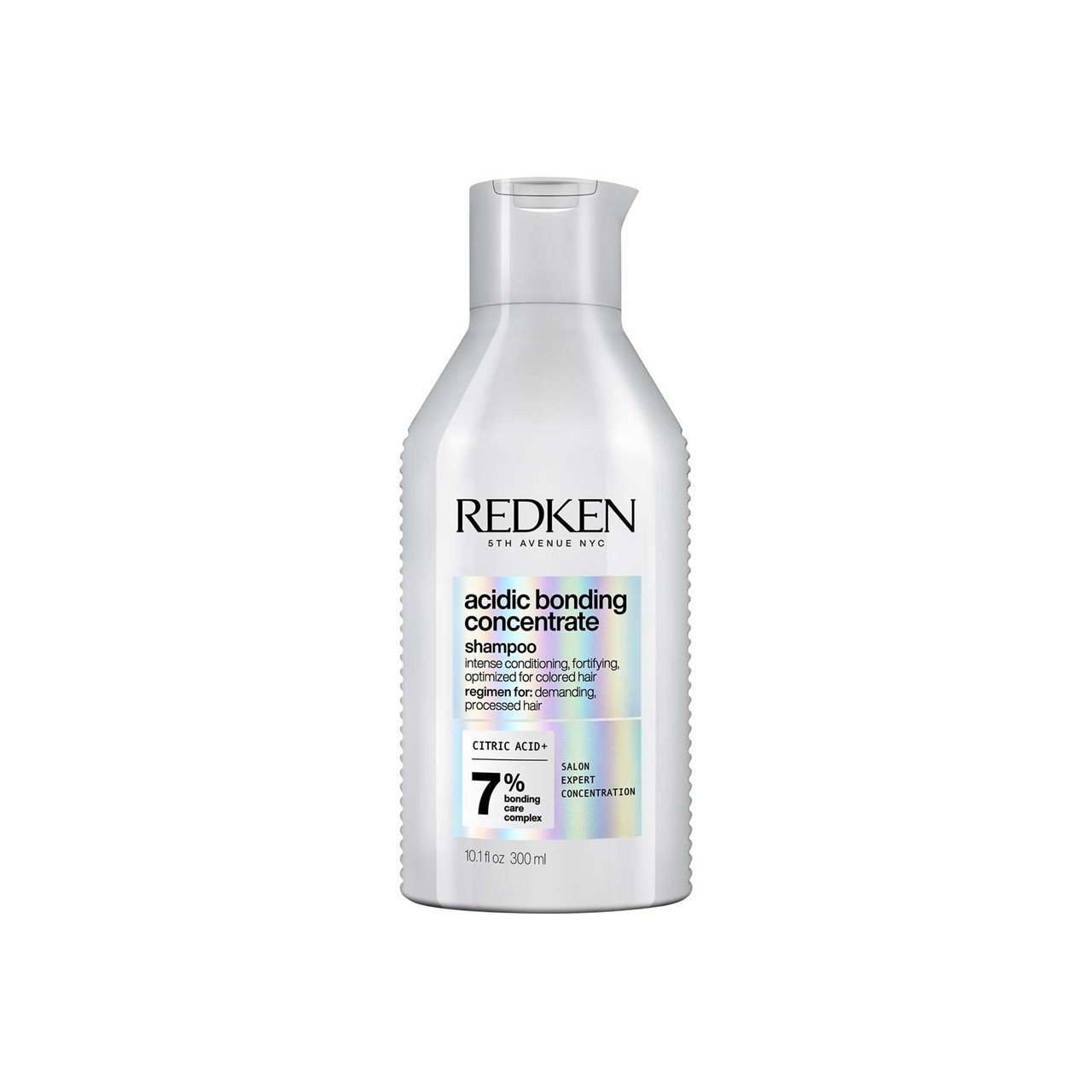 Redken Acidic Bonding Concentrate Shampoo
Redken Acidic Bonding Concentrate Shampoo
